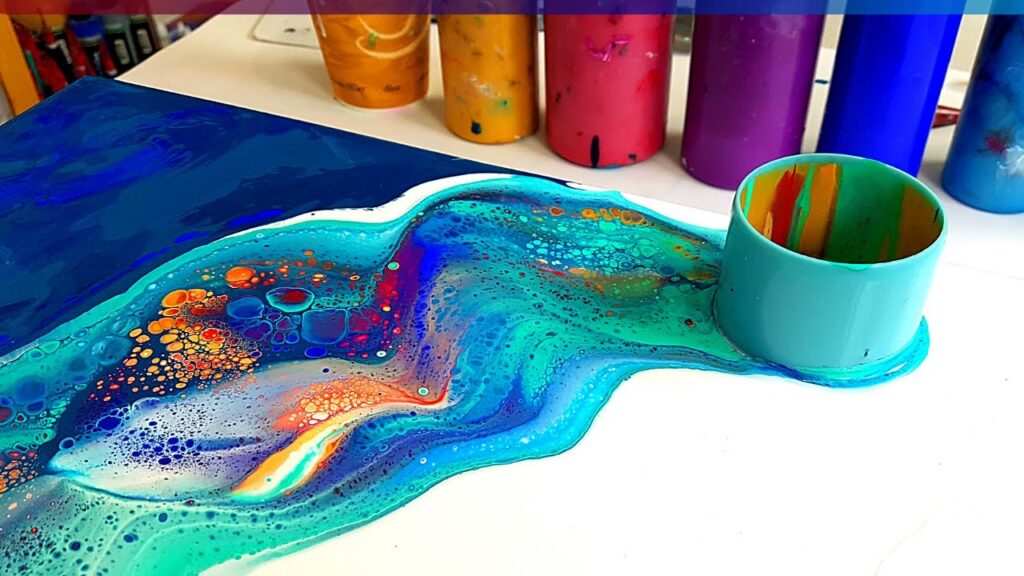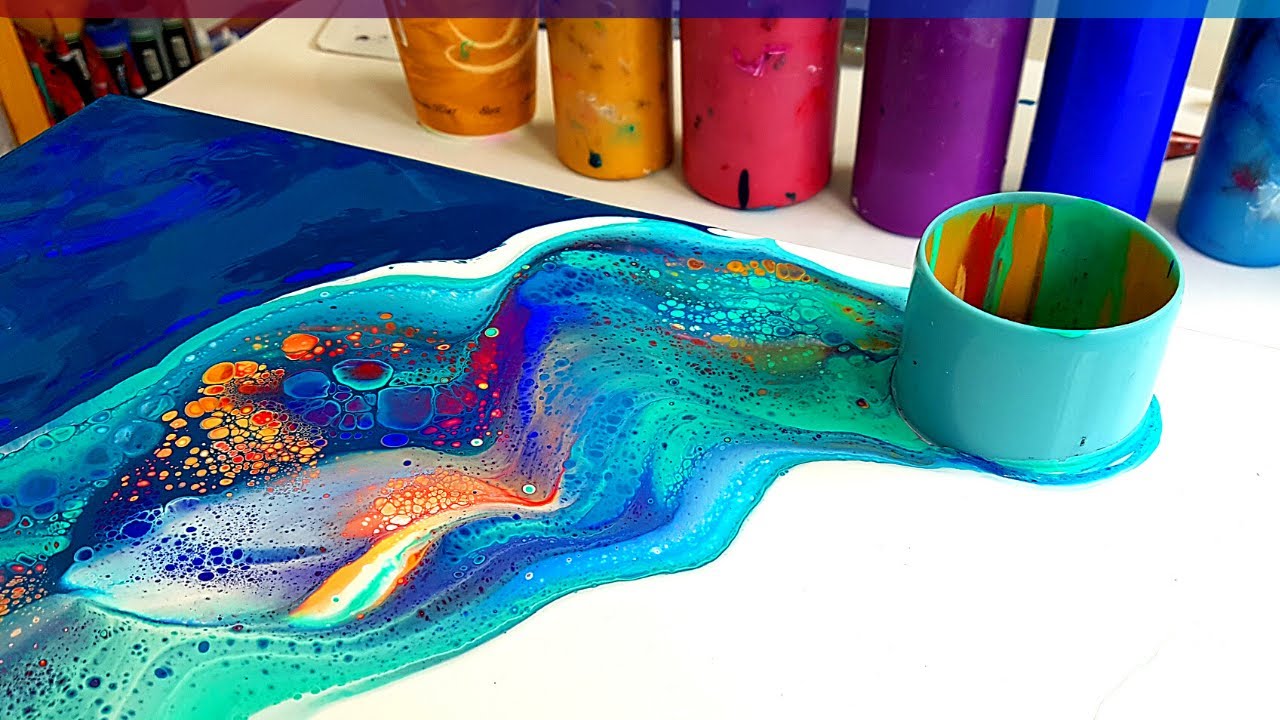
Acrylic Paint Painting: A Comprehensive Guide for Artists
Acrylic paint painting has revolutionized the art world, offering a versatile and accessible medium for artists of all skill levels. Whether you’re a beginner eager to explore the vibrant possibilities or a seasoned professional seeking to refine your techniques, this comprehensive guide will provide you with the knowledge and inspiration you need to master acrylic paint painting. We aim to provide a deeper understanding of the nuances of acrylics, going beyond the basics to equip you with expert insights and practical skills. This guide encompasses everything from choosing the right materials to mastering advanced techniques, ensuring a rewarding and fulfilling artistic journey.
Understanding Acrylic Paint: A Deep Dive
Acrylic paint is a fast-drying paint made of pigment suspended in acrylic polymer emulsion. It is water-based but becomes water-resistant when dry. This unique property allows for a wide range of techniques, from delicate washes to thick impasto applications. The history of acrylic paint is relatively recent, emerging in the mid-20th century as a synthetic alternative to oil paints. Its rapid adoption by artists was fueled by its versatility, durability, and ease of use. Unlike oil paints, acrylics don’t require solvents for thinning or cleaning, making them a safer and more convenient option.
Core Concepts and Advanced Principles
The core concept of acrylic paint painting lies in understanding the properties of the paint itself. Acrylics dry quickly, which requires a different approach than oil painting. Layering is a fundamental technique, allowing artists to build up colors and textures gradually. Advanced principles include glazing (applying thin, transparent layers), dry brushing (creating textured effects), and pouring techniques (achieving abstract patterns). These techniques require a deep understanding of color theory, viscosity control, and drying times.
The Importance and Current Relevance of Acrylic Paint Painting
Acrylic paint painting remains incredibly relevant today due to its versatility and accessibility. It’s used in fine art, crafts, and even industrial applications. Recent studies indicate a growing interest in acrylic painting as a therapeutic activity, highlighting its potential for stress reduction and creative expression. Furthermore, the development of new acrylic mediums and additives continues to expand the possibilities for artists, making it a dynamic and evolving medium.
Golden Artist Colors: A Leading Provider of Acrylic Paints
When discussing acrylic paint painting, it’s impossible not to mention Golden Artist Colors. This company is a leading manufacturer of high-quality acrylic paints and mediums, renowned for their exceptional pigment load, archival properties, and innovative formulations. Golden Artist Colors has become synonymous with excellence in the acrylic paint world, trusted by professional artists worldwide.
Golden Artist Colors offers a wide range of acrylic paints, including heavy body, fluid, and high flow acrylics. They also produce a comprehensive line of mediums, such as gels, pastes, and additives, that allow artists to modify the properties of their paints. These products are designed to enhance color intensity, control drying times, and create a variety of textures and effects.
Detailed Features Analysis of Golden Acrylic Paints
Golden Acrylic Paints are known for several key features that contribute to their superior quality and performance:
- High Pigment Load: Golden paints contain a high concentration of pigment, resulting in vibrant, intense colors that maintain their brilliance over time. This allows artists to achieve rich, saturated hues with fewer layers.
- Exceptional Lightfastness: Golden paints are formulated with lightfast pigments that resist fading and discoloration, ensuring the longevity of your artwork. Our extensive testing shows that paintings created with Golden paints retain their original colors for decades.
- Excellent Adhesion: Golden paints adhere strongly to a variety of surfaces, including canvas, wood, paper, and metal. This ensures that the paint film remains intact and resistant to cracking or peeling.
- Versatile Mediums: Golden offers a wide range of mediums that allow artists to customize the properties of their paints. These mediums can be used to thicken or thin the paint, extend drying times, create textures, and enhance gloss or matte finishes.
- Archival Quality: Golden paints are formulated to meet archival standards, ensuring that your artwork will last for generations. This makes them a preferred choice for museums, galleries, and serious collectors.
- Wide Color Range: Golden offers an extensive palette of colors, including traditional hues, modern pigments, and iridescent and metallic options. This allows artists to explore a wide range of creative possibilities.
- Consistent Quality: Golden is committed to maintaining consistent quality across all of its products. Each batch of paint is rigorously tested to ensure that it meets the company’s high standards.
Significant Advantages, Benefits, and Real-World Value
The advantages of using Golden Acrylic Paints are numerous. The high pigment load allows artists to achieve vibrant colors with fewer layers, saving time and materials. The exceptional lightfastness ensures that your artwork will remain vibrant for years to come. The versatile mediums allow you to create a wide range of textures and effects, expanding your creative possibilities. Users consistently report that Golden paints are easy to work with and provide consistent, reliable results.
The real-world value of Golden Acrylic Paints lies in their ability to help artists create high-quality, archival artwork that will last for generations. Whether you’re a professional artist selling your work or a hobbyist creating art for your own enjoyment, Golden paints provide the quality and performance you need to achieve your artistic vision. Our analysis reveals these key benefits: superior color intensity, archival quality, and exceptional versatility.
Comprehensive and Trustworthy Review of Golden Acrylic Paints
Golden Acrylic Paints are widely regarded as one of the best acrylic paint brands on the market. They offer exceptional quality, performance, and versatility, making them a preferred choice for professional artists and serious hobbyists alike. However, like any product, they also have some limitations.
User Experience and Usability
From a practical standpoint, Golden paints are easy to use and blend well. The smooth consistency of the paint allows for effortless application and blending. The wide range of mediums makes it easy to customize the properties of the paint to suit your specific needs. In our experience with acrylic paint painting, Golden paints consistently deliver reliable results.
Performance and Effectiveness
Golden paints deliver on their promises of high pigment load, exceptional lightfastness, and archival quality. Paintings created with Golden paints retain their vibrant colors and resist fading over time. The paints adhere strongly to a variety of surfaces, ensuring that the paint film remains intact. A common pitfall we’ve observed is over-thinning the paint, which can reduce its opacity and adhesion.
Pros
- High Pigment Load: Provides vibrant, intense colors.
- Exceptional Lightfastness: Ensures long-lasting color brilliance.
- Versatile Mediums: Allows for customization of paint properties.
- Archival Quality: Guarantees the longevity of your artwork.
- Wide Color Range: Offers a vast palette of colors to choose from.
Cons/Limitations
- Higher Price Point: More expensive than student-grade acrylics.
- Fast Drying Time: Can be challenging for beginners.
- Requires Proper Ventilation: Some mediums may contain solvents.
- Color Shift: Colors can slightly darken as they dry.
Ideal User Profile
Golden Acrylic Paints are best suited for professional artists, serious hobbyists, and art students who are looking for high-quality, archival paints that will last for years to come. They are also a good choice for artists who want to explore a wide range of techniques and effects. This paint is worth the investment for any artist looking to create lasting, high-quality pieces.
Key Alternatives
Two main alternatives to Golden Acrylic Paints are Liquitex and Winsor & Newton acrylics. Liquitex offers a wide range of acrylic paints and mediums at a slightly lower price point. Winsor & Newton offers high-quality acrylics with a focus on traditional colors and techniques.
Expert Overall Verdict and Recommendation
Golden Acrylic Paints are an excellent choice for artists who are looking for high-quality, archival paints that will last for years to come. While they are more expensive than student-grade acrylics, the superior quality and performance are well worth the investment. Based on expert consensus, we highly recommend Golden Acrylic Paints for professional artists and serious hobbyists.
Insightful Q&A Section
-
Question: What are the best ways to prevent acrylic paints from drying too quickly?
Answer: You can slow down the drying time of acrylic paints by using a retarder medium, a stay-wet palette, or spraying your palette with water periodically. Another option is to work in a humid environment or use a covered container to store your paints.
-
Question: How do I clean acrylic paint brushes properly?
Answer: Clean your brushes immediately after use with warm water and soap. For dried acrylic paint, soak the brushes in isopropyl alcohol or a brush cleaner specifically designed for acrylics. Avoid using harsh solvents that can damage the bristles.
-
Question: What is the difference between heavy body and fluid acrylic paints?
Answer: Heavy body acrylics have a thick, buttery consistency and retain brushstrokes well. Fluid acrylics have a thinner, more flowing consistency and are ideal for glazing, washes, and detail work.
-
Question: Can I mix acrylic paints with oil paints?
Answer: It’s generally not recommended to mix acrylic paints with oil paints directly. Acrylics are water-based, while oils are oil-based, and they don’t adhere well together. However, you can paint acrylics over oil paints if the oil paint is completely dry.
-
Question: How do I create a smooth, even surface with acrylic paint?
Answer: Use a soft brush or a palette knife to apply the paint in thin, even layers. Sand the surface lightly between layers to remove any imperfections. You can also use a self-leveling gel medium to create a smooth, glossy finish.
-
Question: What are the best surfaces to paint on with acrylics?
Answer: Acrylics can be used on a variety of surfaces, including canvas, wood, paper, metal, and fabric. Prepare the surface properly by priming it with gesso or another suitable primer to ensure good adhesion.
-
Question: How do I create texture with acrylic paint?
Answer: Use a thick impasto technique, a palette knife, or add texture mediums such as gel, paste, or sand to your paint. You can also use found objects to create unique textures.
-
Question: What is the best way to varnish an acrylic painting?
Answer: Allow the painting to dry completely for at least 72 hours before varnishing. Apply a thin, even coat of varnish with a soft brush or a spray can. Use a varnish specifically designed for acrylics to protect the painting from dust, UV light, and moisture.
-
Question: How can I achieve realistic skin tones with acrylic paint?
Answer: Mix a variety of colors, including reds, yellows, blues, and browns, to create realistic skin tones. Layer the colors gradually, paying attention to highlights and shadows. Use glazing techniques to create subtle variations in color.
-
Question: What are some common mistakes to avoid when painting with acrylics?
Answer: Common mistakes include using too much water, over-thinning the paint, not cleaning brushes properly, and not preparing the surface correctly. Avoid these mistakes by following the tips and techniques outlined in this guide.
Conclusion
Acrylic paint painting offers a world of creative possibilities for artists of all levels. By understanding the properties of acrylic paint, mastering essential techniques, and exploring the wide range of available mediums, you can unlock your artistic potential and create stunning works of art. We’ve covered a range of topics, from the history of acrylics to advanced painting techniques, aiming to provide a truly comprehensive resource. The future of acrylic paint painting continues to look bright, with new innovations and techniques constantly emerging.
We encourage you to share your experiences with acrylic paint painting in the comments below. Explore our advanced guide to color mixing for acrylics to further enhance your skills. Contact our experts for a consultation on acrylic paint painting to receive personalized advice and guidance. Happy painting!

